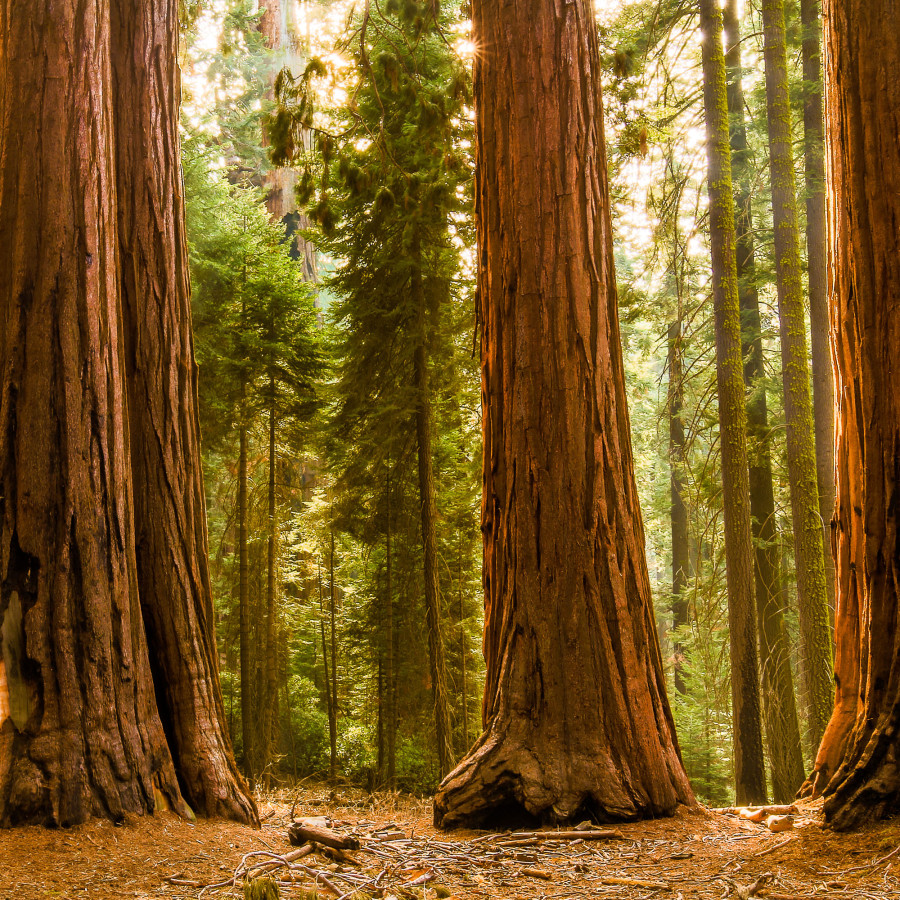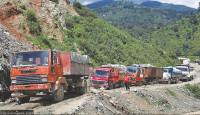Opinion
Carbon sequestration
Taking carbon dioxide out of the air and storing it in soil helps to cut global warming
Kusum Adhikari
Nepal has an area of 147,181 square kilometres, 40.4 percent of which is covered by forests. More than two-thirds of the population live and work in rural areas within subsistence agricultural economies in which forests are important assets. Biomass energy accounts for approximately 70 percent of the energy requirement. The burning of biomass fuels represents one of the major sources of greenhouse gas emissions. A temperature trend analysis from 1971 to 2014 shows a rise in the average annual maximum temperature by 0.056 degree Celsius; and during the same period, 22,372 climate-induced disasters occurred.
Considering the looming uncertainties and increasing climatic threats, the coping ability of vulnerable communities is questionable. The farm sector, which accounts for 29 percent of the Gross Domestic Product and employs 66 percent of the population, is already facing weather and climate impacts. Other important sectors of the economy such as forestry, livestock, tourism and infrastructure are also climate sensitive. Nepal has prioritised adaptation to climate change and disaster risk management policies besides acknowledging the need for international climate finance to complement national resources.
Reducing greenhouse gas emissions and continuously monitoring them is essential for the reduction of global warming. Cutting emissions from deforestation and forest degradation has been piloted in the developing countries as a climate change mitigation strategy by providing financial incentives for carbon sequestration in the forests. Carbon exists in many forms, predominately as plant biomass, soil organic matter and carbon dioxide in the atmosphere and dissolved in seawater. Carbon sequestration is the process of long-term storage of carbon in oceans, soils, vegetation (especially forests), and geologic formations.
Carbon sequestration is one of the prominent ecosystem services provided by forests, however, it has been debilitated by deforestation and forest degradation. Rapid population growth is considered to be the main cause of deforestation and forest degradation. Nepal had a population of 26,494,504 in 2011, with more than 50.3 percent of the people living in the Tarai. The high population has resulted in heavy pressure on the forests to meet their demand for forest products. Forest carbon sequestration is recognised as a cost effective and efficient option to address the issues of climate change. Trees have the potential to suck carbon dioxide from the air and store it in their wood, barks, leaves and roots.
Carbon farming uses plants to trap carbon dioxide, then strategically uses practices such as reducing tillage, planting longer rooted crops, and incorporating organic material into the soil to encourage the trapped carbon to move into an stay in the soil. Managing the vegetative cover to enhance the capacity of the soil to store large volumes of atmospheric carbon offers a practical and almost immediate solution to some of the most challenging issues currently faced by humankind.
Agro-forestry is a sustainable land use system and practice in which woody perennials (trees, shrubs) are grown with herbaceous annuals (crops, pasture grass). It supports the livelihood of billions of people worldwide and provides a wide range of products such as food, fuel, fibre, fodder and forage for livestock. According to a case study of agro-forestry in the mid-hills of Nepal, it is possible to earn Rs45,490 per hectare from carbon sequestration per household if a payment scheme is introduced. Climate change is the world’s most urgent environmental problem, and given world dependence on fossil fuels, one of its most intractable problems. Renewable energy sources in the form of solar, wind, hydro, geothermal, and biomass energy must ultimately replace fossil-fuel combustion.
Energy obtained by combustion of biomass (plant matter produced in the recent past) is perpetually renewable and is ultimately carbon neutral, and the carbon dioxide released in combustion is ultimately absorbed by new plant growth. Biochar production is a variation of biomass energy, where plant matter is only partially combusted for energy, leaving biochar as a charcoal residue. The carbon in this biochar is highly resistant to further decay, so that when applied to agricultural soils, a portion of the original biomass carbon is effectively sequestered for decades, centuries, or even millennia. Biochar is thus a potentially carbon-negative energy resource, producing energy while simultaneously sequestering carbon. Biochar has been used for centuries to enrich the soil for farming, but lately it has been drawing increased attention for its ability to sequester carbon.
Carbon storage is not cheap, but neither is climate change. The task of reducing greenhouse gases will only become larger and more daunting the longer we delay. Various adaptive and area-specific policies and programmes are critical for sequestering carbon, and perhaps to a lesser extent, promoting biodiversity. Such policies and programmes need to provide communities with practical guidance for adopting locally suitable management options. Dedicated policies are crucial to incentivise communities to pursue active forest management that enhances biodiversity conservation and carbon storage. Considering the increasing vulnerability and economic costs of climate change in the country, it is imperative that Nepal mobilises national and international climate strategies to protect its population and communities from climate risks and safeguard development gains.
Adhikari is currently working as an agri-intern at the Prime Minister Agriculture Modernisation Project.




 25.12°C Kathmandu
25.12°C Kathmandu










